Real Shooters: WWF Brawl for All
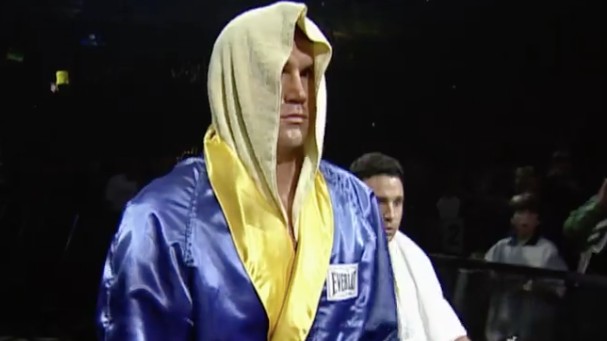
RondaRousey.com’s Real Shooters explores the good, the bad, and the weird of pro wrestling-MMA crossover moments in history.
So far, Real Shooters has mostly explored the more successful interactions between MMA and pro wrestling, whether it’s MMA history being used to enhance a wrestling story, a wrestler stepping up to a legitimate fight, or the wide variety of more realistic—or “shoot style”—wrestling out there.
This installment looks at one of the most notable failed attempts to mix MMA and pro wrestling, the WWF’s 1998 Brawl for All tournament. Rather than go down in history as a successful innovation in sports entertainment, Brawl for All became infamous for its rebellious crowd response, legitimate injuries, and ultimately, the snuffing out of the one star it helped ignite.
Prologue: Real Tough Guys and Real Money
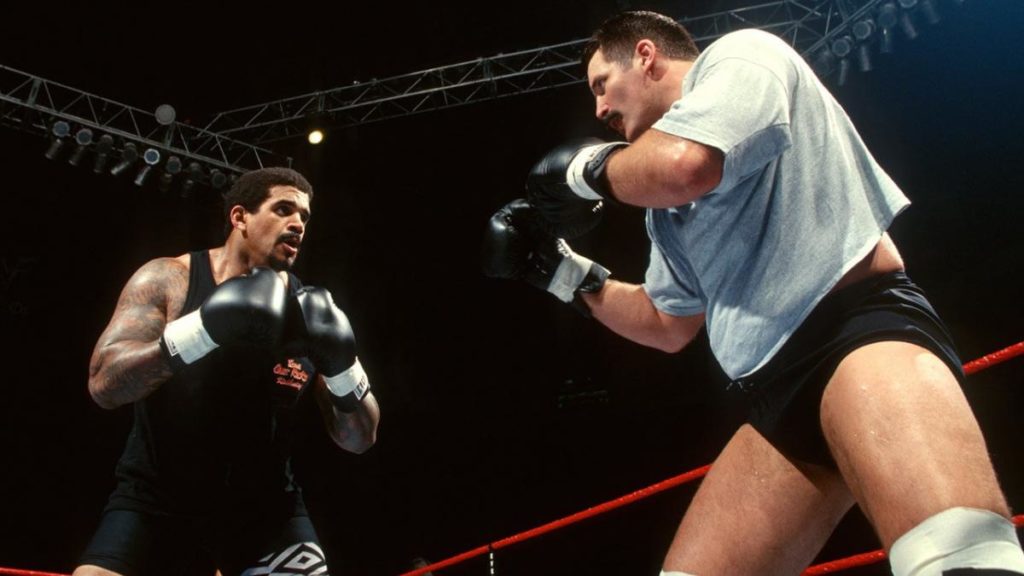
Like most things in wrestling, there are different stories about how Brawl for All came about.
According to “Hardcore” Bob Holly in his autobiography The Hardcore Truth, Brawl for All was meant to boost ratings and “to get a wrestler by the name of ‘Dr. Death’ Steve Williams over.” According to Holly:
“We were told the winner would get $100,000 and that each time we fought, we would get five grand whether we won or lost. Sure, I thought they’re not going to pay us $5,000 each match for doing this! But they genuinely did.”
According to John “Bradshaw” Layfield (“JBL” to most WWE fans today, “Bradshaw” at the time of this tournament) and Jim Cornette, WWF head writer Vince Russo came up with the idea for a shoot fighting tournament on RAW either in order to capitalize on the UFC and pro wrestling booms at the same, because JBL claimed he could beat anyone on the roster in a bar fight. The tournament would prove who was legitimately the toughest guy on the WWF roster.
Oddly, the night before Brawl for All began, an MMA-wrestling crossover star and undeniable real tough guy’s stock had just gone up in the WWF: That was when Ken Shamrock won the King of the Ring tournament. But Shamrock, depending on who you ask, was either banned from Brawl for All or declined to compete. The only other men in WWF with comparable combat sports backgrounds were Dan Severn and Steve Blackman. But though they entered the tournament, they didn’t make it past the first round for reasons other than being beaten clean, which called the competition’s legitimacy as something that showed real fighting skill—if it ever had any—into question.
The Brawl for All format, though, was so strange that a background in MMA, amateur wrestling, or boxing wouldn’t completely prepare someone to compete in it. The fights consisted of three rounds that were each only one minute long. The competitor who connected the most punches per round scored five points, every takedown was worth five points, a knockdown was worth ten, and a knockout earned a win. Despite the emphasis of takedowns to Brawl for All, all the competitors wore boxing gloves, making them more difficult to do.
The structure of Brawl for All ended up negating most of what’s exciting about both MMA and pro wrestling. The rounds were so short that it was easy for nothing to happen in a round. There was little room for the organic drama of a fight to develop and since Brawl for All was a shoot, even less of the pre-determined drama of professional wrestling. And in 1998, soap opera drama acted out by characters fans cared about was what packed stadiums for the WWF, along with the action. Almost no drama and very little action were not at all what Attitude Era RAW audiences wanted to see, and they made that clear from the night Brawl for All began.
Round 1: They’re Shouting Boo-rawl
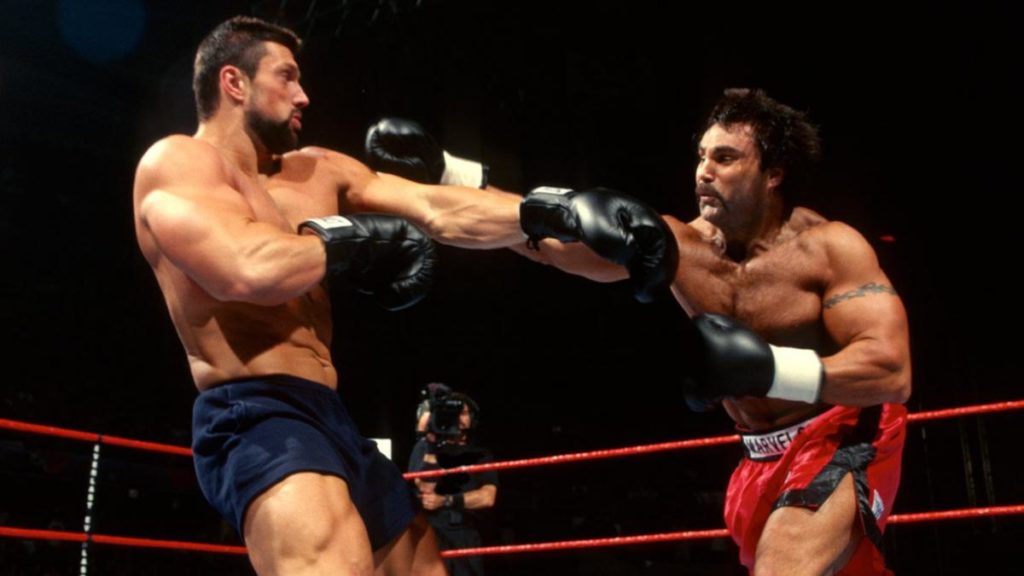
Brawl for All was a failure from the start. Its first match was arguably its strongest on paper, martial arts virtuoso Steve Blackman vs. boxer Marc Mero, and the crowd hated it. On June 29, 1998, the wrestler and the boxer squared up… and almost nothing happened. Mero landed some punches, Blackman scored a few takedowns, and the crowd started chanting “We Want Wrestling.” The second match on the episode, Bradshaw vs. Mark Canterbury (aka Henry O. Godwinn of The Godwinns) briefly excited the crowd with some punches, but the punches of bar fighters looked silly in an environment trumped up to look like a combat sports setting and Bradshaw’s first win was meant with loud calls of “BORING!”
However, the first round of Brawl for All wasn’t without its highlights. Savio Vega and huge German bodybuilder Brakus really went at each other, and the crowd ate up the way Vega’s real-life street fighting skills shown through. In his fight with Bob Holly, Bart Gunn displayed some of the punching power that would lead him to tournament victory—though his best Brawl moments were yet to come. And Steve Williams made it look like he’d earned the nickname “Dr. Death” in his bout with Quebecer Pierre, his brutal-looking strikes earning him a victory by technical knockout.
But despite its upsides, the first round of Brawl for All spelled the tournament’s doom and damaged not only the quality of a few weeks of RAW but some wrestlers’ careers. Brakus sustained injuries from his fight with Vega that led to his retirement from wrestling and Road Warrior Hawk broke his nose. The second round would only produce more of these kinds of problems.
Round 2: The Upset
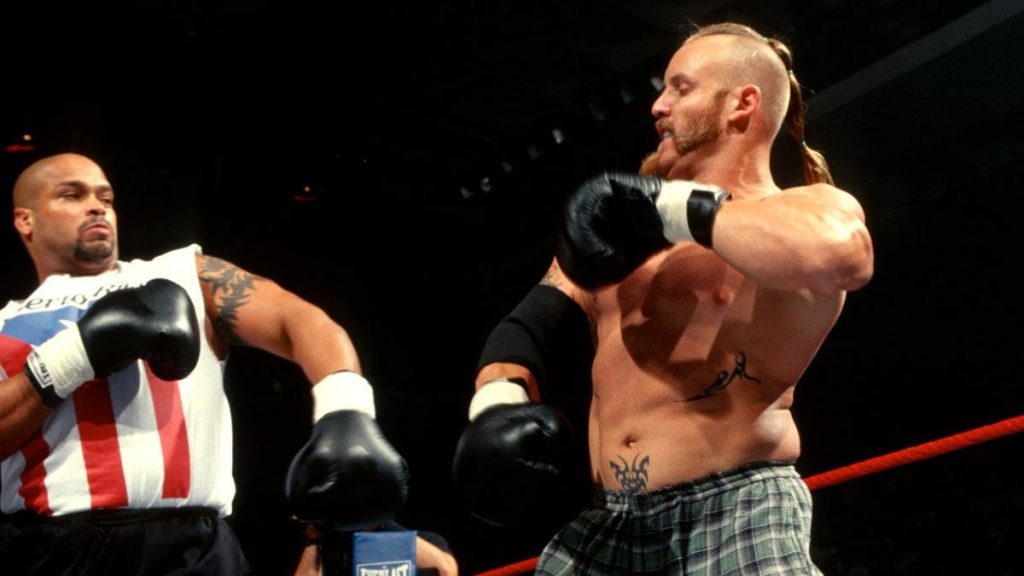
The second round of Brawl for All was met with more crowd annoyance, resulted in more injuries, and featured people who didn’t even win in the first round. Dan Severn, who had been visibly frustrated during his loudly booed first-round match, had, in kayfabe, withdrawn from the tournament because he had nothing to prove. (In real life, he had either withdrawn or was removed because he didn’t like the tournament’s rules.) So the opponent he defeated, The Godfather made it to Round 2. Steve Blackman injured himself while training, so Marc Mero advanced to lose a poorly-received fight with Bradshaw. Savio Vega vs. Droz at least featured two men who won in the first round, but their match resulted in Vega being legitimately injured, which resulted in the end of his WWF career.
The biggest highlight of the second round also allegedly led to the end of another man’s WWF career, though in a much less direct way. Two first-round standouts, Bart Gunn and Steve Williams clashed in a match that was initially meant to be a shoot, attempted to be made into a work, and ended up playing out as a shoot after all.
Williams and Gunn seemed to be at very different stages in their careers in the summer of 1998, and it’s understandable why Williams was believed to have more of an upside. He was huge and terrifying. He was a seasoned wrestler but had so far made his name working in Japan, so he was a fresh face in the WWF. All he needed, in theory, was the right angle to become a top-notch heel.
In contrast, it looked like the best days of Bart Gunn’s WWF career were behind him. His most notable work was as half of The Smoking Gunns tag team with Billy Gunn from 1993 to 1996. He’d been half of The New Midnight Express along with Bob Holly, but the late ’90s iteration of that team wasn’t its most successful. When Brawl for All began, Gunn was one of the least notable performers on the WWF roster, but he was about to punch his way to infamy.
Holly writes that because “the office” wanted Williams to win this tournament in which everyone was supposed to fight each other for real, they wanted Gunn to take the fall. He suspects that if Gunn hadn’t knocked Williams out, the scoring would have been fixed so that Williams advanced to the semi-finals. But Gunn did knock him out.
In its third round, Gunn vs. Williams was being audibly rejected by the audience when the drama began to unfold. Gunn scored a single-leg takedown and Williams stumbled, looking injured. (It was soon revealed that he was injured.) Gunn capitalized and landed some punches on his limping opponent, then knocked “Dr. Death” down and out. It was the first definitive knockout of Brawl for All.
On commentary, Jim Ross noted how it may have seemed like an upset “in some circles,” but a lot of guys knew how tough Bart Gunn was. “Some circles,” however, were upset by how Gunn messed up the WWF’s plans to build Williams into a threatening rival for “Stone Cold” Steve Austin. So rather than come up with a new long-term plan for the new knockout artist, they ended up plotting his downfall.
Semifinals and Final: The Smoking Gunn
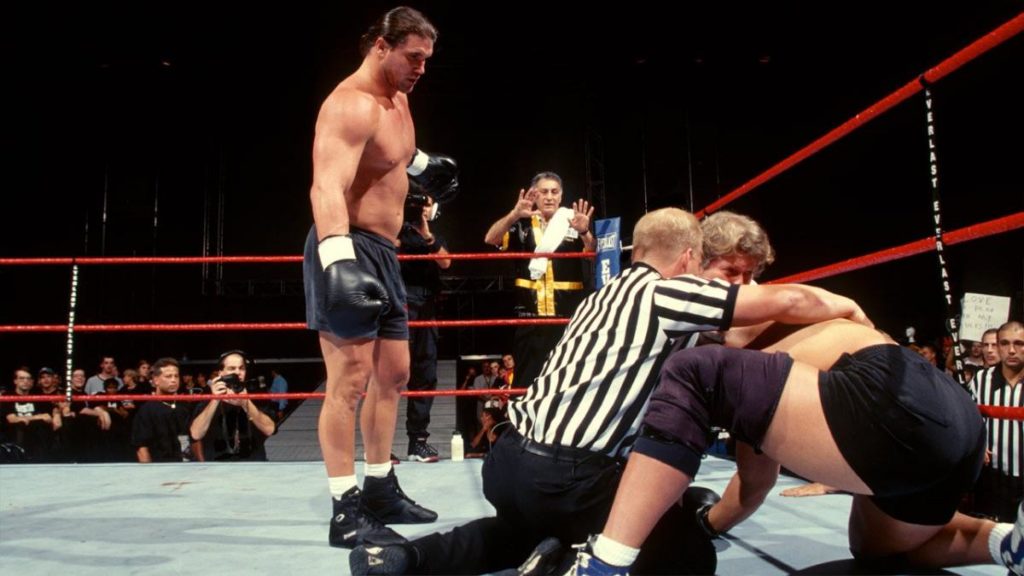
The third and semifinal round continued Gunn’s hot streak and Bradshaw’s lukewarm one. Bradshaw advanced to the finals with a less than thrilling win over Droz, while Gunn decisively defeated The Godfather with another knockout. Gunn vs. Godfather also benefited from the injection of some pro wrestling drama; the two had collided on the previous night’s episode of Sunday Night Heat, which led to The Godfather telling Gunn that while he would usually offer him a night with his hos (the Attitude Era!), “Tonight, I’m just gonna kick your ass.”
The final bout of Brawl for All, Gunn vs. Bradshaw, didn’t have any artificial drama behind it, but that didn’t matter when it became the tournament’s most exciting—and shortest—fight. Bradshaw landed a punch or two, but Gunn quickly knocked him down with one. The referee checked if the shaken Bradshaw could continue, but as soon as the match was underway again, two more punches from Gunn knocked Bradshaw out.
As Gunn raised his gloved hands in victory, Shawn Michaels declared on commentary, “You’re looking at a guy who has just made a name for himself in this business.” Ross added that Gunn “might have opened the door to a new career.” While Gunn would spend the next several months in Brawl-inspired feuds, the door to his WWF career would soon be shut in his face.
Epilogue: Enter Butterbean
By the time WrestleMania XV rolled around in the spring of 1999, Bart Gunn had spent months feuding with Steve Williams and Bob Holly, who had beef with him for beating them in the Brawl, in regular pro wrestling fashion. At WrestleMania, Gunn would return to the Brawl for All match format, this time against not another wrestler, but a professional fighter.
Gunn’s opponent was Eric “Butterbean” Esch, the then-reigning IBA World Super Heavyweight Champion. Butterbean racked up accomplishments in boxing, toughman competitions, and MMA throughout his career and when his boxing career came to an end in 2013, he had won 77 out of his 91 fights. In 1999, he only had one loss to his name. He outweighed Gunn 330 pounds to 250 and was known as a knockout artist. If this was really going to be a shoot (and it was), there had to be no way the WWF thought Gunn could win this, right?
According to both Bob Holly and Butterbean himself, the company knew that Gunn would be doomed against the boxer, and that’s why they made the match. Esch told Wrestling Inc. in 2019 that “Vince wanted [Bart Gunn] to throw one [during Brawl for All], he wouldn’t do it, so I was his punishment.” Holly also elaborated on this in his autobiography:
“This guy was a pro boxer. I don’t care who you are, you don’t play someone else’s game. None of us should have tried to box him but [WWF management] got into Bart’s head and brainwashed him into thinking that he could beat Butterbean in a straight-up boxing match. Bart bought into the hype. He didn’t change as a person but he did start overestimating himself. … The whole deal was set up purely to humiliate Bart because he had humiliated Jim Ross’s boy ‘Dr Death.’ The office knew he didn’t have a chance.”
Gunn vs. Butterbean had pomp and circumstance befitting a legitimate athletic contest between big names. Boxer Vinny Paz was the special referee and the judges were trainer Kevin Rooney, fighter Chuck Wepner (the inspiration for the movie Rocky), and Gorilla Monsoon. Both Gunn and Butterbean entered in boxer’s gear. And then Butterbean reminded everyone what a real champion of combat sports looks like, landing professional-grade punches and knocking Gunn out in 35 seconds.
In Brawl for All, Bart Gunn had proven he was a better fighter than most people, but his WrestleMania XV embarrassment was a reminder that he still wasn’t a top-tier tough guy. He was released by the WWF soon after the show, with no attempt to salvage his damaged second chance at stardom. His wrestling career continued for the next eight years, with Gunn finding late-career success in Japan, especially in All Japan Pro Wrestling, where “Dr. Death” had originally made his name.
Once Gunn was out of the WWF, the legacy of Brawl for All was that of a completely failed experiment. Its style of shoot fighting-pro wrestling hybrid entertainment hadn’t caught on with fans, it hadn’t created the star the WWF wanted, and the WWF had rejected the star it ended up creating. As both an MMA and pro wrestling experiment, Brawl for All led to the success of none.
Night 2 of the two-night extravaganza that is WrestleMania 36—aka “The Only WrestleMania Too Big for Just One Night”—airs tonight, Sunday, April 5 at 7 p.m. ET/4 p.m. PT. (The Kickoff Show airs an hour before, at 6 p.m. ET/3 p.m. PT.) It will be available to watch on the WWE Network.